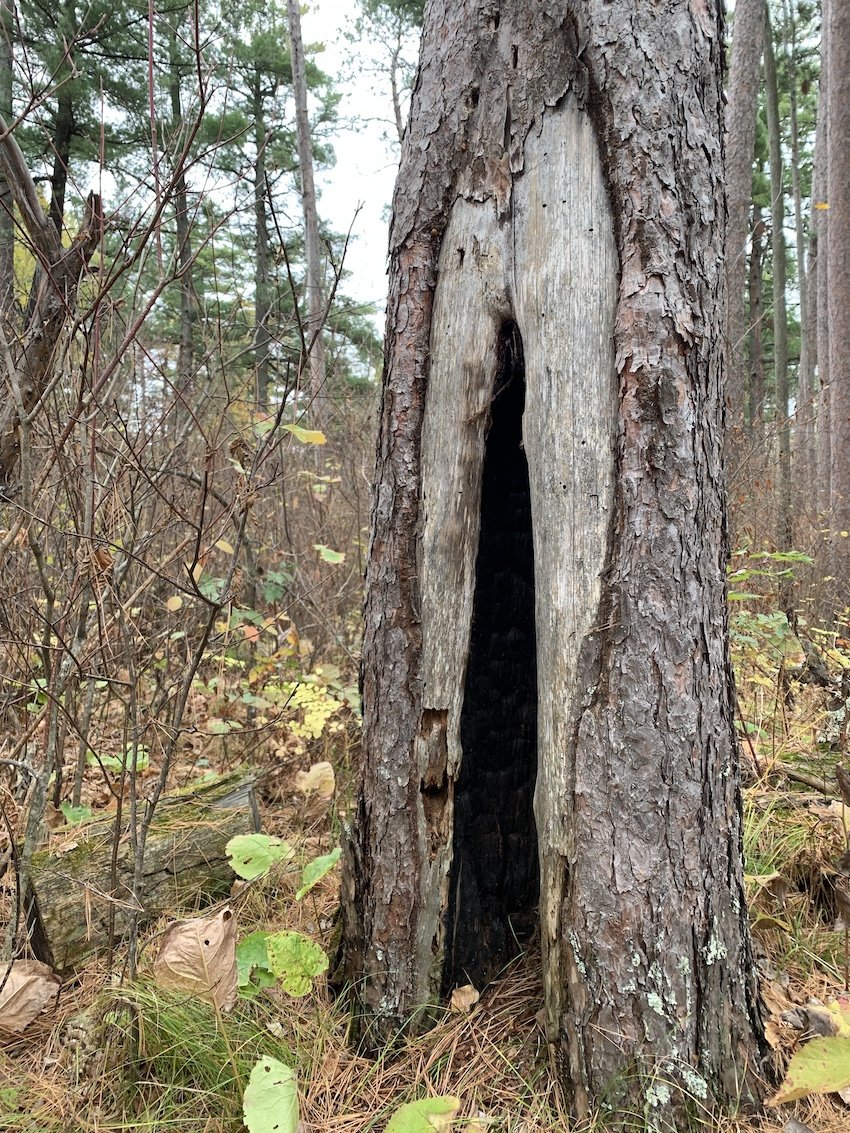Welcoming Minnesota into the Old-Growth Forest Network!
By Network Manager, Nick Sanchez
For the past several months, we’ve been working with the Minnesota Department of Natural Resources (DNR) to understand how they protect old-growth forests on state lands, where, and of course, which of these forests make great candidates to be featured in the national Old-Growth Forest Network. Together we decided to begin with celebrating two legendary forests within protected State Scientific and Natural Areas (SNA) in north central Minnesota, Lost 40 and Itasca Wilderness Sanctuary in Itasca and Clearwater Counties.
On Oct 12th, we joined experts from the Minnesota DNR SNA staff as they led families, local students, and residents on the 1-mile hike through the Lost 40. This forest contains 32-acres of old-growth pine which continued to grow through the logging era thanks to a Public Lands Survey mapping error which mistook the area for Coddington Lake. Incredible red and white pines sway in the super canopy above the rest of the forest. Equally as fascinating are the slumbering giants that lay on the forest floor whose branches haven't been in reach of human hands for hundreds of years.
The following day, we celebrated and toured the Itasca Wilderness Sanctuary which was established to preserve wilderness character within the 32,000 acre Itasca State Park. Nearly 6,500 acres of old-growth are protected in the park, as well as the shorelines of multiple lakes and the headwaters of the mighty Mississippi River. The park offers a variety of ways to enjoy nature with ample camping and lodging options, canoe and kayak rentals, and a spectrum of trails to satisfy any hiker. The paved Wilderness Drive takes visitors on a scenic drive along the western boundary of the Sanctuary with small parking areas for 3 short but impactful interpretive trails, including walkways to the former state champion red and white pines. While the tops have blown off in both trees, the “snags” or standing trunks alone inspire the imagination. An excellent place for birding and home to beavers, bobcats, bears, and even wolves, Itasca is clearly the kind of place where champion trees are possible.
Several ecosystems are represented within the two forests including some of the best examples of fire-dependent red pine communities in the region. Red pine forests are characterized by the effects of historically frequent surface fires through indigenous burning and occasional lightning strikes. Wind, armillaria fungi, and infrequent crown fires also play an important role in shaping these forests, creating a patchwork forest of openings, regeneration pockets, neighborhoods of hardwoods and distinct cohorts of red and white pine.
As State Scientific and Natural Areas and state-designated old-growth, these sites are thankfully well-protected from commercial logging. Growing concerns among SNA staff are the emerging and cascading issues which include the impacts of fire suppression on fire-dependent ecosystems, an overabundant deer population which gobble up the limited pine regeneration, and the impacts of the unfolding climate crisis bringing warmer temperatures and prolonged drought, all threatening to degrade these important forests.
The Minnesota Department of Natural Resources protects more than 44,000 acres of designated old-growth on state-administered lands and we’re excited to engage more Minnesotans in exploring and celebrating more of these special places next year and beyond. As you plan your adventures for 2024, we recommend that you find the Lost 40 and plan a few days to camp at Itasca State Park as you will need time to fully experience this immense landscape. Both forests are within reach from the city of Bemidji where you can launch your adventure starting with a donut from Raphael’s Bakery and recounting the day at Bemidji Brewing.






